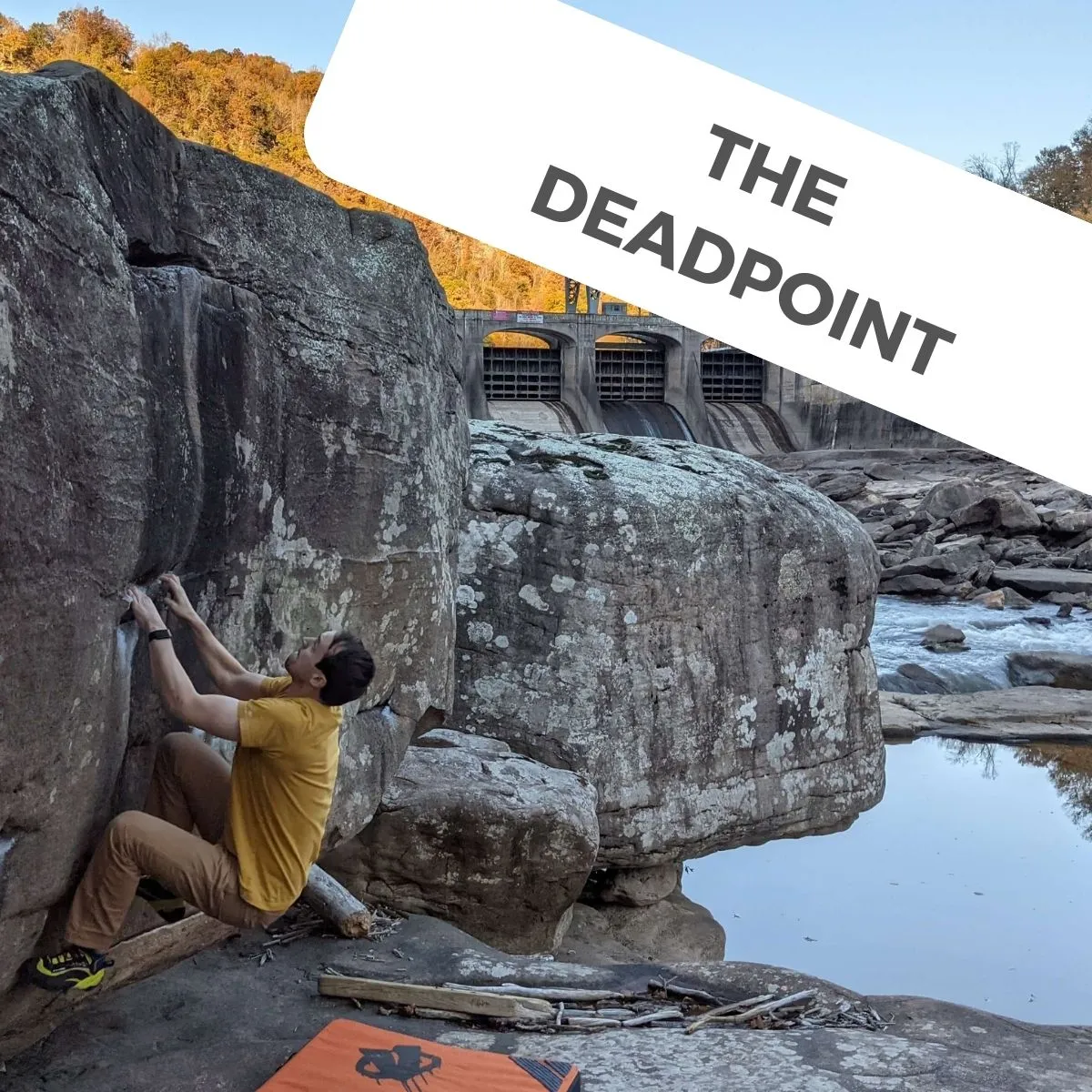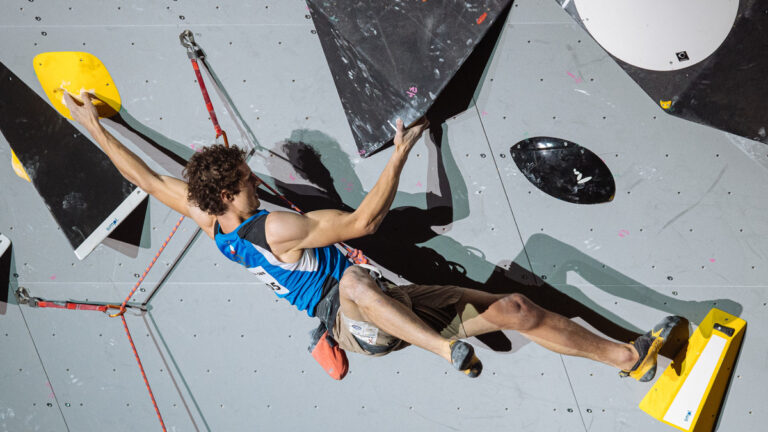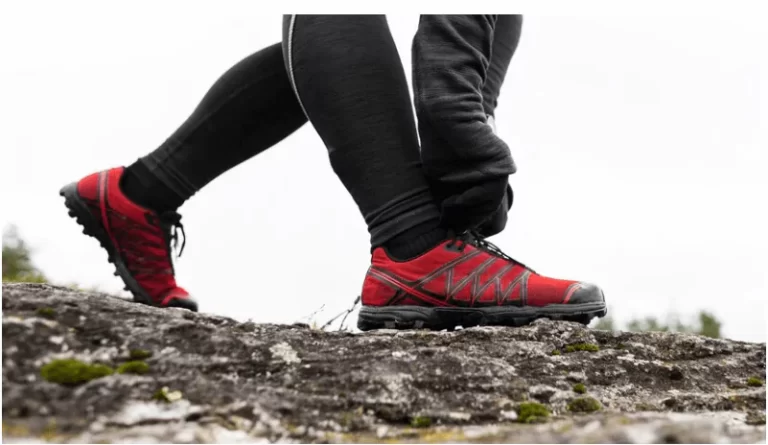How to Deadpoint in climbing: Techiue & Moves ( 2024 )
Deadpointing is a professional climbing technique that every climber should be familiar with. This move will not only make you climb more efficiently, but it will also help you get out of bad positions and significantly increase your reach on the rock.
What is a deadpoint?

Deadpointing is a dynamic climbing move used when the next hold is too far away to reach statically. The climber uses momentum by pushing with the legs and pulling with the arms, moving from a hanging position to a lunge for the next hold. This brief moment when the climber is weightless is known as the friction point, hence the name.
In theory, the friction point in climbing actually refers to the moment of weightlessness during a dynamic movement, not just the dynamic movement itself.
Deadpointing is more commonly called dynamic ascent. Many climbers may have used this technique without realizing its specific name. Now that you know this term, you will be able to answer accurately if someone asks you about breakeven in the future.
How to Deadpoint?
Deadpointing is an advanced climbing technique that allows climbers to reach points they otherwise could not reach through a combination of speed, coordination and precision.
A friction point should not be confused with a bench press, where limbs come off the wall to move on to the next hold. During the friction point, the climber still has body parts on the wall (like the push leg and push arm).
Deadpointing is something every climber must learn at some point. But some climbers will have to learn it much earlier than others. (Even if everyone benefits!) I am of course talking about little climbers.
Shorter climbers don’t have many options and generally don’t have the arm span to create a route designed to solve a bouldering problem. Often, smaller climbers find themselves unable to reach distant holds that should be within static reach. It’s very frustrating (I know, I’m short) but that frustration goes away once you get past the sticking point.
Deadpointing allows smaller climbers to greatly expand their capabilities. But it’s not just useful for smaller climbers, it can be useful for all types of climbers.

How To Complete A Deadpoint?
A number of steps must be taken to reach a sticking point. First, make sure your legs are stable enough to provide a strong push. Next, hang in the starting position with your arms straight. While looking at the target handle, push off with your feet and reach with your remaining arm, lunging forward toward the target handle.
It should look something like this:
Notice how I start with a hook followed by an explosive movement to the target point. I push with my right leg while pulling with my left arm to create enough momentum to reach the target point. (By the way, in this example I’m pushing from two support points, you can also push from a single support point)
As Curious Doc so eloquently describes: There should be a contraction phase followed by an explosive extension phase where the body’s forward momentum propels you in the desired direction.
Let’s see that.
1. Start with a squat.
To prepare for your swing, start in a hanging position with your arms and hips directly away from the wall. Your feet must be firmly anchored on the support(s).
2. Push your legs and thrust your hips
Create momentum by pushing with your feet, then reaching out with your arms.
3. Lunge to next position
Complete the dead center by reaching the target point. Maintain tension in your body throughout the movement.
Common mistakes when determining Deadpointing
Blind spots are a challenge and require a combination of coordination, speed and precision. Getting it right takes time and you can make mistakes. Here are three big mistakes that will prevent you from performing a good neutral.
Use bent arms
Many climbers keep their arms bent before performing a dynamic movement. This prevents you from holding on and making explosive movements. You need to hang on your arms so you can generate enough force to reach the target point.
Don’t use your feet
Often beginners try to perform dynamic movements with their arms.
Don’t use your momentum
You can use your legs, but you still won’t have enough momentum to reach the final hold. In this case, you are probably missing the explosive element of the blocked point.
Make sure to crouch before lunging forward.
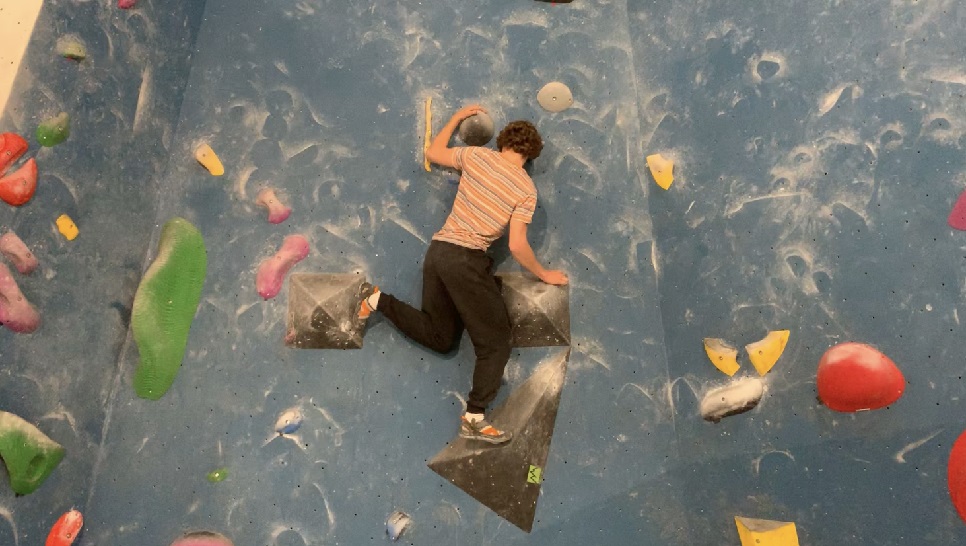
Exercise “Impasse”
This last point will take some practice to learn and master. You probably won’t master this technique in one session, and that’s okay. It is therefore an advanced technology. In addition to deadlifts, you can train your body to prepare it for dynamic movements.
Practice moving your feet
Unlike the arms, the leg muscles are huge. This is why we use our legs to lift heavy objects while standing. By pushing with our feet, we can create a ton of explosive force without tiring our arms. This is why dead zones are so energy efficient!
We will need to convert this pushing movement into muscle memory. The best way to do this is to isolate your legs by doing climbing exercises specifically designed for your legs.
Start with simple rock problems and practice climbing with just your feet. Instead of reaching and straining your arms, push with your legs. You will still hold the handles, but you will not be able to reach them firmly. Make sure your legs are doing all the work.
Stay away from simple problems and continue to use your legs. Remember: your feet do all the work. If you feel bulky, you’re not using your legs!
It may seem strange at first if you’re not used to lifting with your feet first, but gradually you’ll adapt and develop your muscle memory.
Body tension exercise.
As the technology is advanced, it is difficult to determine the end point if you still have difficulty attaching the body lift to the wall. Or if you don’t understand what body tension is at all.
Simply put, body tension means using the body’s muscles to maintain balance and control while climbing.
This type of control over your body is the key to reaching your breaking point.
If your feet often slip while climbing and you slouch a lot, you may need to work on releasing tension in your body. This is something that must be recognized and put into practice. Start by being aware of your body when you climb.
Foot slipping is the result of a lack of movement in the feet. You’re so focused on the next step that you forget what your feet are under. This type of awareness should be practiced in every climbing session until it becomes muscle memory.
Although body tension is primarily trained through practice, it requires a certain level of core strength. If you feel like your body needs some extra help, check out our basic exercises for climbers.
When to use Deadpointing?
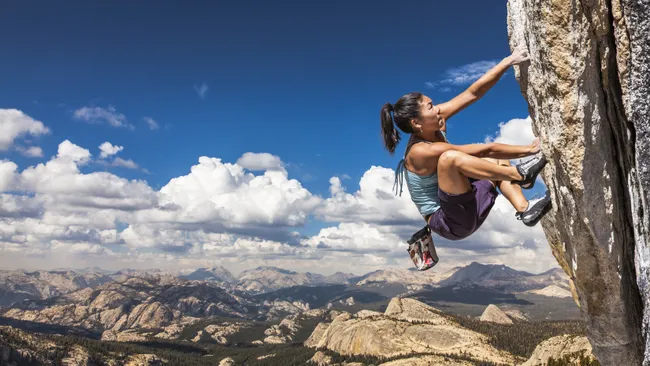
The hard stop is an important climbing technique that all types of climbers should use. These are the situations in which stalemates are most useful.
The next reservation is out of reach.
The most common use case for the friction point is when the suspension is too far away and cannot be reached consistently. Even a handle that the hand can reach incredibly far can be opened using the friction point technique.
As mentioned above, shorter climbers will feel the need to use the friction point technique more often than taller climbers.
Save energy
Many climbers use a dead center even when the holds are close together. This is because dynamic movements save a lot of energy by pushing the legs (large muscles), while static climbing requires a lot of upper body strength (small muscles).
In this short video, Climbers Action explains how the performance of neutral climbing compares to static climbing.
Get out of a Poor position
Sometimes climbing puts us in strange and unnecessary situations. Imagine that you have one arm and a fulcrum on one side. In such a situation, your center of gravity is outside your reference point (your contact with the wall) and will most likely prevent you from getting out. At this point you can use the back flag to counter the swing. But that still doesn’t give you the following information. If you want to move to the next step from this position, you will need to use your momentum and lean on a friction point to maintain the next position.

